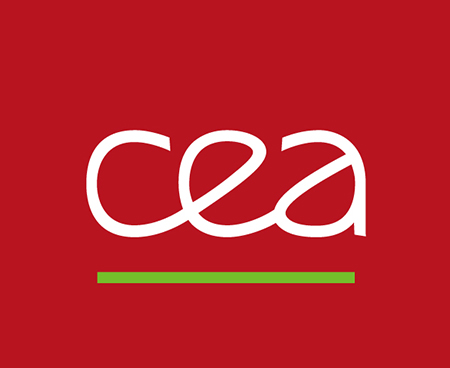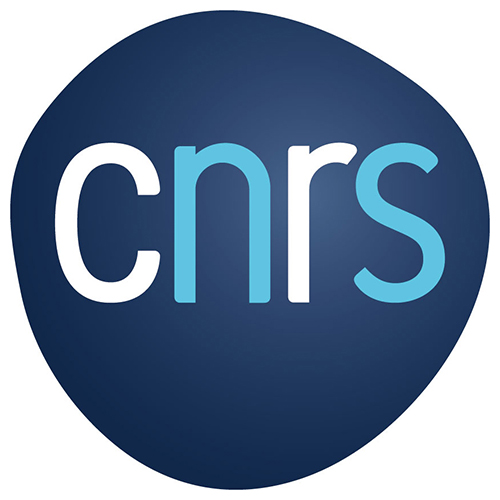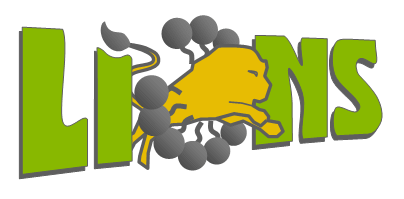Plateforme
ALIENOR

introduction
ALIENOR est un accélérateur linéaire d’électrons situé au CEA Saclay (https://www.cea.fr/paris- saclay). Il est exploité par le laboratoire NIMBE (UMR 3685)/LIONS (http://iramis.cea.fr/Pisp/lions/index.html) dans le bâtiment 546.
Il génère des électrons pulsés de 10 MeV. La durée des impulsions peut être réglée de 10 ns à 200 ns, avec une surface de faisceau de 1 cm2. La dose par impulsion est d’environ 20 Gy (1 Gy = 1 J.kg-1) pour un faisceau d’électrons de 10 ns, et la fréquence des impulsions peut être modifiée d’un coup à 10 Hz (1 Hz, 2 Hz….. 10 Hz). Le nombre total d’impulsions est mesuré, permettant l’estimation de la dose totale reçue par l’échantillon. La dose totale maximale reçue par l’échantillon en une journée peut varier entre 1 et 10 MGy, selon les conditions expérimentales.
Intérêt:
- Les électrons de 10 MeV pénètrent (volume sondé : ~ cm3).
L’évolution de l’échantillon après irradiation peut être sondée par de nombreuses techniques : mesures de gaz, spectroscopies, etc. L’environnement de l’échantillon peut être instrumenté (température, pression, etc.) La pénétration des électrons de 10 MeV permet de réaliser des expériences complexes (échantillons avec risques biologiques ou radiologiques, après évaluation de la sûreté) avec un dépôt énergétique bien défini. - L’échantillon n’est pas activé.
(Remarque : Le numéro atomique des éléments significativement présents dans les échantillons doit
être inférieur à 79. Sinon, merci de nous contacter). - Possibilité d’atteindre des doses élevées en peu de temps (50 kGy en dix minutes) afin de mieux comprendre l’évolution des échantillons avec l’irradiation.
- Pour l’utilisateur, transformation minimale de son environnement échantillon :
Irradiation de batteries, cellules photovoltaïques….
Accès immédiat aux analyses post mortem (pas d’activation ; mesures de gaz tels que H2, CO, CO2, CH4…. produits lors de l’irradiation ; spectroscopies…..)
Dosimétrie mesurée.
Principales applications :
Irradiation dans des conditions de haute pression/haute température, irradiation à forte dose (maximum 10 MGy), irradiation à basse température, irradiation focalisée (radiothérapie), test d’équipement.
Publication :
![]() « Confined water radiolysis in aluminosilicate nanotubes: the importance of charge separation effects », M.-C. Pignié, V. Shcherbakov, T. Charpentier, M. Moskura, C. Carteret, S. Denisov, M. Mostafavi, A. Thill and S. Le Caër, Nanoscale, 13, 3092 (2021) (https://pubs.rsc.org/en/content/articlehtml/2021/nr/d0nr08948f)
« Confined water radiolysis in aluminosilicate nanotubes: the importance of charge separation effects », M.-C. Pignié, V. Shcherbakov, T. Charpentier, M. Moskura, C. Carteret, S. Denisov, M. Mostafavi, A. Thill and S. Le Caër, Nanoscale, 13, 3092 (2021) (https://pubs.rsc.org/en/content/articlehtml/2021/nr/d0nr08948f)
![]() “Efficient hydrogen production from irradiated aluminum hydroxides”, J. A. Kaddissy, S. Esnouf, D. Saffré, J.-P. Renault, Int. J. Hydrogen Energy, 44, 3737 (2019) (https://www.sciencedirect.com/science/article/pii/S0360319918340576)
“Efficient hydrogen production from irradiated aluminum hydroxides”, J. A. Kaddissy, S. Esnouf, D. Saffré, J.-P. Renault, Int. J. Hydrogen Energy, 44, 3737 (2019) (https://www.sciencedirect.com/science/article/pii/S0360319918340576)
![]() “Irradiation Effects on Polymer-Grafted Gold Nanoparticles for Cancer Therapy”, M. Le Goas, A. Paquirissamy, D. Gargouri, G. Fadda, F. Testard, C. Aymes-Chodur, E. Jubeli, T. Pourcher, B. Cambien, S. Palacin, J.-P. Renault, and G. Carrot, ACS Appl. Bio Mater., 2, 144–154 (2019) (https:// pubs.acs.org/doi/abs/10.1021/acsabm.8b00484)
“Irradiation Effects on Polymer-Grafted Gold Nanoparticles for Cancer Therapy”, M. Le Goas, A. Paquirissamy, D. Gargouri, G. Fadda, F. Testard, C. Aymes-Chodur, E. Jubeli, T. Pourcher, B. Cambien, S. Palacin, J.-P. Renault, and G. Carrot, ACS Appl. Bio Mater., 2, 144–154 (2019) (https:// pubs.acs.org/doi/abs/10.1021/acsabm.8b00484)
![]() « Tuning the Nature of the Anion in Hydrated Layered Double Hydroxides for H2 Production under Ionizing Radiation », M. Lainé, Y. Liao, F. Varenne, P. Picot, L. J. Michot, E. Barruet, V. Geertsen, A. Thill, M. Pelletier, J.-B. Brubach, P. Roy, S. Le Caër, ACS Appl. Nano Mater., 1, 5246 (2018) (https://pubs.acs.org/doi/abs/10.1021/acsanm.8b01240)
« Tuning the Nature of the Anion in Hydrated Layered Double Hydroxides for H2 Production under Ionizing Radiation », M. Lainé, Y. Liao, F. Varenne, P. Picot, L. J. Michot, E. Barruet, V. Geertsen, A. Thill, M. Pelletier, J.-B. Brubach, P. Roy, S. Le Caër, ACS Appl. Nano Mater., 1, 5246 (2018) (https://pubs.acs.org/doi/abs/10.1021/acsanm.8b01240)
![]() “Production of H2 by water radiolysis in cement paste under electron irradiation: A joint experimental and theoretical study”, S. Le Caër, L. Dezerald, K. Boukari, M. Lainé, S. Taupin, R. M. Kavanagh, C. S. N. Johnston, E. Foy, T. Charpentier, K. J. Krakowiak, R. J.-M. Pellenq, F. J. Ulm, G. A. Tribello, J. Kohanoff, A. Saúl, Cement Concrete Res., 100, 110 (2017) (https://www.sciencedirect.com/science/article/pii/S0008884617302065)
“Production of H2 by water radiolysis in cement paste under electron irradiation: A joint experimental and theoretical study”, S. Le Caër, L. Dezerald, K. Boukari, M. Lainé, S. Taupin, R. M. Kavanagh, C. S. N. Johnston, E. Foy, T. Charpentier, K. J. Krakowiak, R. J.-M. Pellenq, F. J. Ulm, G. A. Tribello, J. Kohanoff, A. Saúl, Cement Concrete Res., 100, 110 (2017) (https://www.sciencedirect.com/science/article/pii/S0008884617302065)
![]() « Radiolysis as a solution for accelerated ageing studies of electrolytes in Lithium-ion batteries », D. Ortiz, V. Steinmetz, D. Durand, S. Legand, V. Dauvois, P. Maître, S. Le Caër, Nat. Comm., 6, DOI: 10.1038/ncomms7950 (2015) (https://www.nature.com/articles/ncomms7950).
« Radiolysis as a solution for accelerated ageing studies of electrolytes in Lithium-ion batteries », D. Ortiz, V. Steinmetz, D. Durand, S. Legand, V. Dauvois, P. Maître, S. Le Caër, Nat. Comm., 6, DOI: 10.1038/ncomms7950 (2015) (https://www.nature.com/articles/ncomms7950).
Contact:
alienor@cea.fr
Responsable scientifique :
Sophie Le Caër (+33 1 69 08 15 58),
Jean-Philippe Renaud (+33 1 69 08 15 50)
Responsable technique :
Jorge Vieira (+33 1 69 08 00 79)




